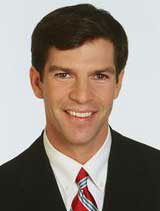Q: I’m a first-time candidate. After guiding me to victory in my primary, one of my chief strategists asked me to hire his ne’er-do-well son. The son was a campaign volunteer and got along well with everyone, but I turned down the request. I didn’t want to start out my career like that. Did I make the right call, or did I make an enemy for life?
—A Political Neophyte, Kansas City, Mo.
Both.
Q: Does direct mail still work? Is it a good use of money relative to other forms of communication, like TV, radio or knocking doors?
—Initials withheld, New York City
Increasingly, no. There are some places it still works, though. Rural Missouri and St. Louis’ southern suburbs, for instance, are home to large concentrations of seniors, some of whom rarely leave the house, aren’t online except to use email, and for whom snail mail is a highlight of the day. Parts of the outer boroughs in particular also have high concentrations of elderly residents.
Of course, in rural Missouri, television buys are cheap. And moving images (TV ads) are generally more effective/persuasive than mail. So TV is preferable to mail there. But in a legislative race in the outer boroughs, New York City media market TV buys aren’t feasible, so mail is a decent option.
Radio is often a good option for negative ads, since listeners tend to forget the source of the attack and thus don’t hold the attacks against the candidates making them to the same degree they would with a television spot, for instance. But again, this is prohibitively expensive for legislative and City Council candidates in the New York City market. Upstate, it is much more feasible.
Of course, having someone actually talk to voters is always preferable to mail, radio or TV. But some areas are remote and/or difficult to canvass because of the distance between homes. And even in areas that can be canvassed effectively, some campaigns lack volunteers. They may employ paid canvassers as a substitute, but that can be dicey: Those jobs typically pay approximately $10 an hour or even less, and sometimes paid canvassers have more legs than teeth.
My chief opponent in a congressional primary used an oxymoronically named D.C. firm called Grassroots Solutions that hires paid canvassers. They were so stupid that they picked the only day of the entire election cycle when you know who is actually going to vote—Election Day—and spent the morning waving signs outside my office instead of at poll sites talking to voters. So be cautious about hiring anyone who claims they’ll help create “organic” grassroots support.
In sum, yours is a question with which every campaign must grapple. Except in anomalous areas like senior-heavy sections of the outer boroughs, money that once went toward mail will largely be steered toward online advertising in the future. In addition to the Internet’s status as a place where people spend more time than the 15 seconds it takes them to go from the mailbox to the trash can, the Web provides ad buyers information about the number of people who actually see and click on an ad, which mail is unable to do. In a metrics-obsessed Moneyball world, tools that enable campaigns to gather information while assessing the effectiveness of their messaging are increasingly essential.
Q: In the run-up to the election I saw a lot of state-by-state polls from progressive groups suggesting that Obama was still close in places like Florida, North Carolina and Nevada. Were those numbers for real, or was it just a way to get Romney to keep spending money there instead of Ohio? Does this type of polling affect the campaigns’ grassroots turnout strategies?
—J.K., Washington, D.C.
In my experience, campaigns make most major decisions concerning resource allocation before the last two weeks of an election. And they do it mostly based upon their own polling data, not third-party data. But of course, campaigns and interest groups occasionally do try to manipulate polling to gain late tactical advantages and drive press narratives.
Q: I saw that you represented a majority black district. Well, I’m a white guy running in a 50 percent black area and I have two questions: 1) Should I campaign in black churches? And 2) Should I campaign in barbershops?
—A Whiter Shade of Pale, St. Louis, Mo.
Yes, and yes. If you want to represent the black community, you’d better be comfortable in the places where political conversations happen. But you may want a Sherpa—a well-regarded parishioner to bring you into the church, or a longtime customer to bring you into the barbershop. This is really no different than walking into a historically Italian neighborhood: Folks want to see a reference.
Though I ultimately established very good relationships with black community leaders, the beginning was rocky. So originally I tried to circumvent the political leadership and go straight to the people. Having played and/or coached basketball my whole life, I decided to host a 3-on-3 basketball tournament/community fair at the park that led the city in the number of murders per year. In later years the tournament would draw several thousand people, but the inaugural one drew just a couple hundred—not to mention a dozen protestors waving handmade signs with slogans like, “No BBQ, No Basketball, No Racist Jeff Smith!”
I asked my school teammate and tournament co-chair Dave Buckner, who is black, if we went too far: Did I commit a faux pas by serving BBQ and watermelon at a basketball tournament in an all-black area? He nodded to the food line snaking around a tree and snapped, “What the f— do you think they want? Mostaccioli?”
(Cross-posted, with permission of the author, from CityandStateNY.com)










Leave a Reply